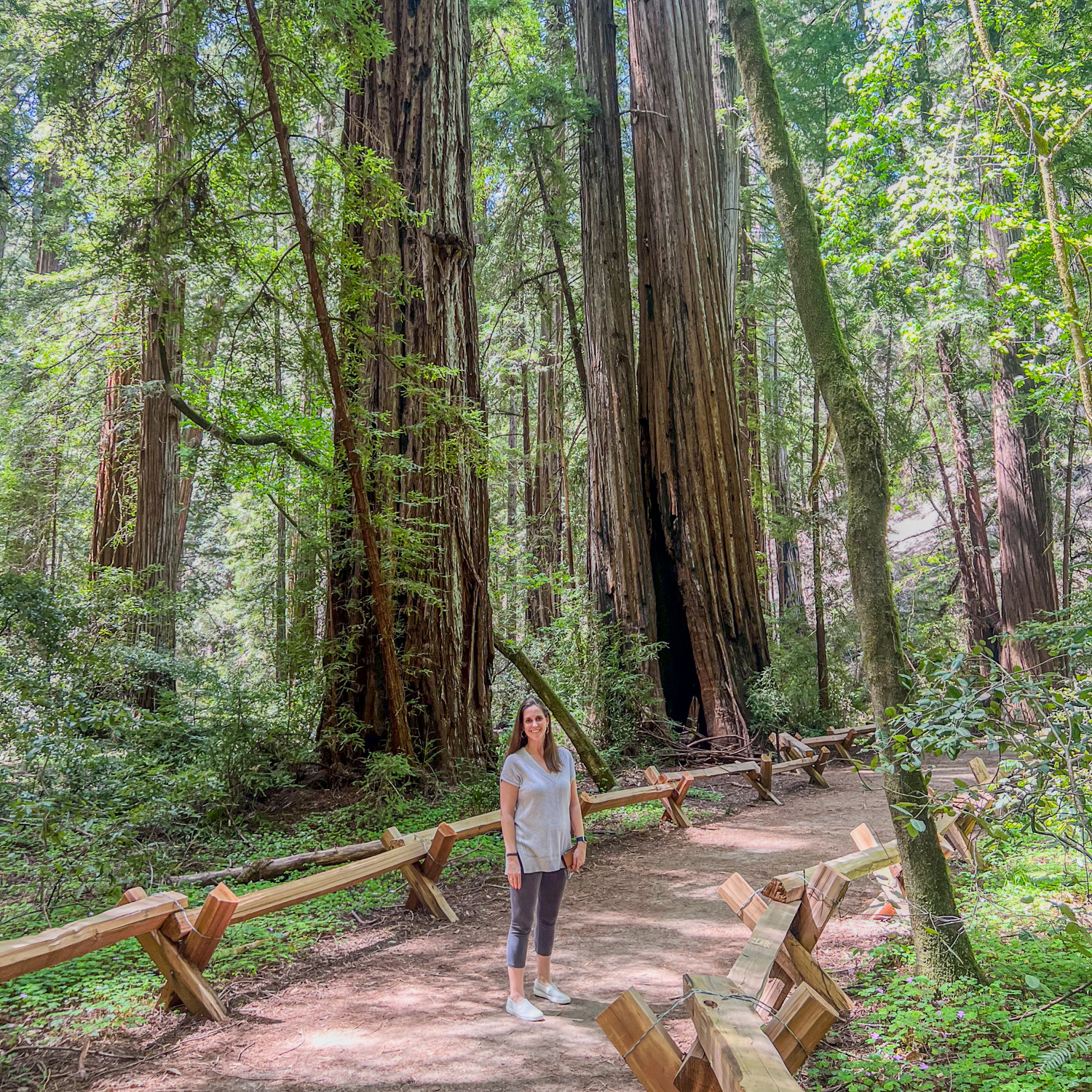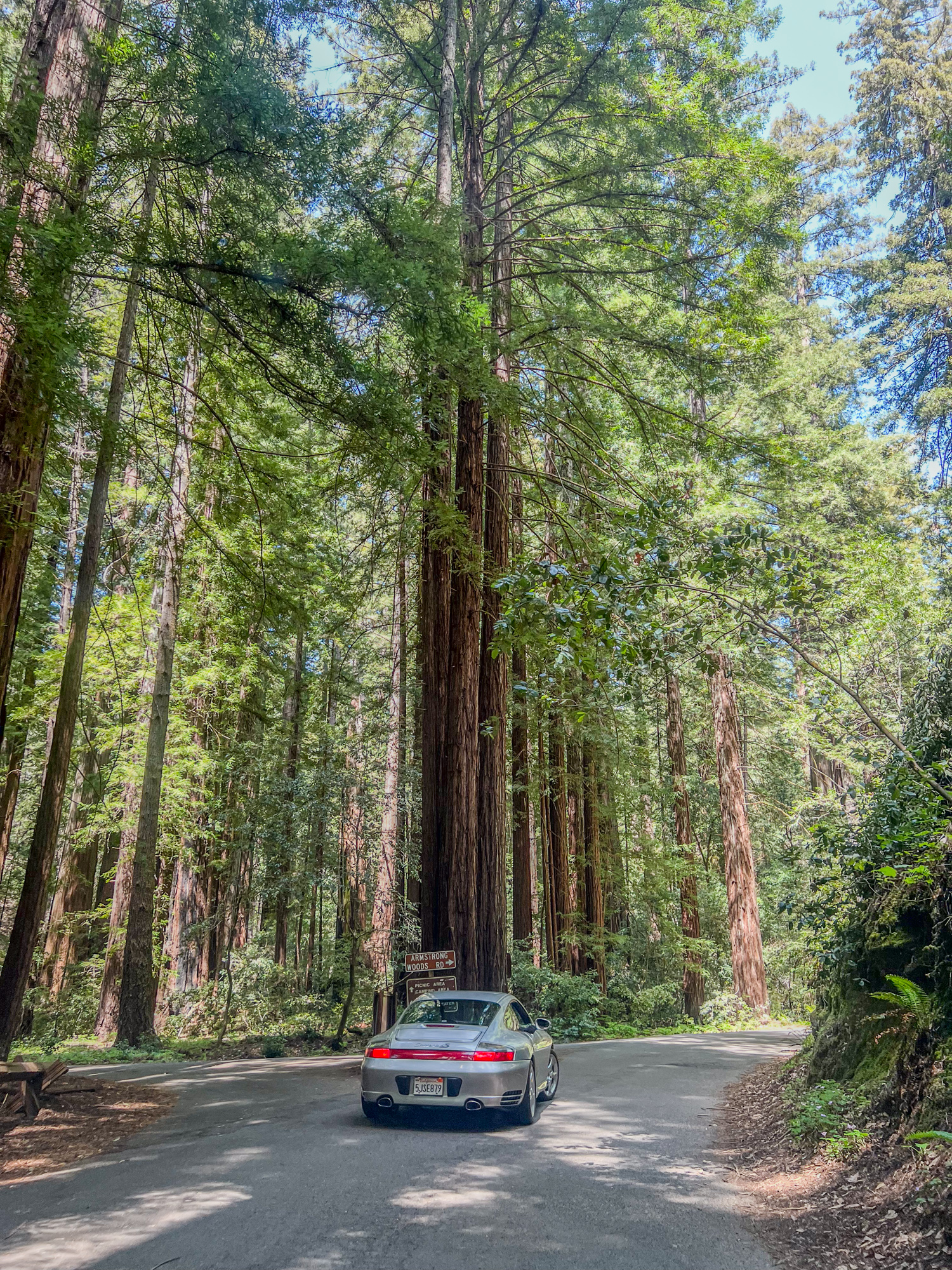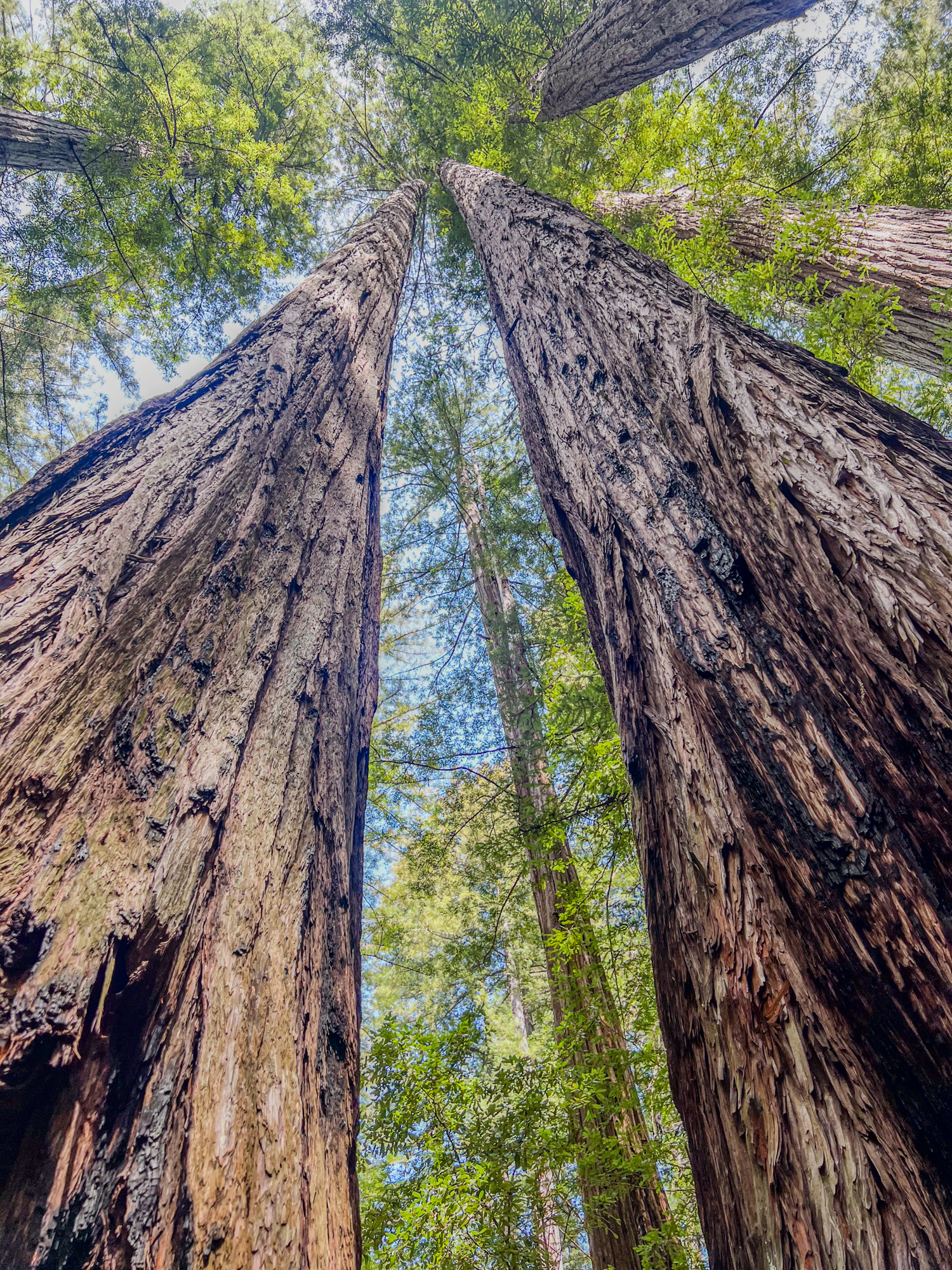Embark on a journey with me to the awe-inspiring Armstrong Redwoods State Natural Reserve in Northern California. Tucked away in Sonoma County, about 75 miles north of San Francisco, this 805-acre reserve offers a peaceful retreat into an ancient coast redwood forest where towering trees have stood for centuries.
As I wander the winding trails with Kel for the first time, I'm captivated by the sheer size of these magnificent trees, the world's tallest. This is a story of first-time discovery in a forest that feels timeless.

Table of Contents
Armstrong Redwoods State Natural Reserve
Getting There
Kel and I departed downtown San Francisco for Sonoma in a rental car on a beautiful spring morning.
We drove north across the Golden Gate Bridge before connecting with California State Route 1, the Pacific Coast Highway (PCH), and visiting Bodega Bay for brunch.
We then turned east, driving inland on Route 116 through the Russian River Valley until we hit the town of Guerneville. From there, we turned north onto Armstrong Woods Road, which led us to the park entrance in a matter of minutes.

I was instantly in awe at the towering redwoods as we followed a silver Porsche with California plates past the Visitor Center to a parking area with a group picnic area and restroom facilities.
The cost to enter Armstrong Redwoods State Natural Reserve with a vehicle is $10. It's essentially a parking fee and a small price to be surrounded by such wonders of the natural world.
About the Redwoods
Before humans walked the Earth, redwood trees covered Europe, Asia, and North America. In California alone, there were about two million acres of coast redwoods. However, due to natural climate change, their range shrank significantly.
Today, redwoods are limited to just three small regions, two of which are in the United States:
- Southern Oregon to Central California is home to the coast redwood (Sequoia sempervirens), the world's tallest tree. These trees enjoy abundant fog and can grow to 350 feet and more!
- California's Sierra Nevada boasts giant sequoias (Sequoiadendron giganteum), the world's largest tree by volume (with trunks as wide as 40 feet).
- Central China has the dawn redwood (Metasequoia glyptostroboides), the only deciduous redwood, meaning they lose their leaves annually.
California's virgin redwood forests were further reduced by man's lust for lumber in the 19th century. An estimated 95% of redwoods were cut down. Those remaining, such as the ones at Armstrong Grove and Muir Woods, are now protected.
Unfortunately, human-caused climate change has led to increasingly hotter and more destructive forest fires, which threaten to kill the remaining redwoods.
After years of watching fires threaten thousand-year-old trees on the news, I prioritized walking among these gentle giants in this natural park before it was too late.
Pioneer Nature Trail

As we were on a day-long self-guided trip through the county of Sonoma, we had limited time to spend at Armstrong Redwoods State Natural Reserve. Several self-guided nature trails make it effortless to explore.
The main park features are accessible along the .75-mile-long Pioneer Nature Trail. The 1.5-mile roundtrip hike was easy, as the trail is relatively flat and well-maintained. No bikes, horses, or dogs are allowed, and it's wheelchair accessible.
I was surprised to see a park sign warning of rattlesnakes, as I associate them more with the deserts of West Texas and Sedona.
Fire Ecology
We weren't walking on the trail long before we came across a striking example of a fire-damaged coast redwood. It was easy to picture flames rising up the trunk based on the black-charred bark that remains.

Interestingly, coast redwoods evolved to be fire-resilient. Their 12-inch thick layers of red bark help defend them from fires, fungi, and insects.
In addition to their thickness, the bark is loaded with tannins and other chemical compounds that help prevent fires from reaching the core of redwoods.
According to a park sign, even if the center of a redwood is burned, the tree compensates by growing stronger at its base around the burned area. The added stability allows it to remain standing for many more years.
Icicle Tree
Coastal redwoods also have an uncanny ability to sprout new growths from their trunks (in addition to growing from seedlings in the soil). These growths, which resemble icicles, can be seen near the base of the trees and are called burls.
On the Pioneer Trail, you'll see a sign for the Icicle Tree, the nickname given to a redwood with an easy-to-see burl growth.

The burl growths contain dormant buds in case the redwood is damaged by natural disasters such as a fire, flood, high winds, or earthquake.
The bud can sprout and grow a new trunk in such an event. As a result, a single tree can support two trunks.
I saw some examples of this while walking through Armstrong Redwoods State Natural Reserve and likened them to two stalks of celery attached at the base.


According to the National Park Service, windthrow (the uprooting of a tree by wind) is the primary cause of death in mature coast redwoods. Perhaps that's not surprising, considering the roots of the world's tallest trees are only 10 to 13 feet deep.
Despite their lack of depth, coast redwood roots grow 60 to 80 feet horizontally, which helps them form a web of interconnected roots with other redwoods, aiding in their stability.
Suggested Reading: The Hidden Life of Trees

As we continued our walk along the Pioneer Nature Trail, we passed redwoods standing tall along Fife Creek and others that had fallen across the trail and forest floor, left in place by park rangers.
Colonel Armstrong Tree
It wasn't long before we arrived at Colonel Armstrong, the oldest tree in Armstrong Redwoods State Natural Reserve.
When coming from the northern section of Pioneer Nature Trail, it's accessible via the 0.3-mile Armstrong Nature Trail. If you're arriving from the south, you'll take the 0.2-mile Discovery Trail.

The 1,400-year-old coast redwood is named after Colonel James Armstrong, a lumberman, and investor who began buying land in this forest during the late 1800s and set aside hundreds of acres for preservation.
Armstrong's daughter, Lizzie Armstrong Jones, and others carried out his wishes to preserve the forest after he died in 1900. The 310-foot Parson Jones tree, the reserve's tall redwood, is named after Lizzie's husband.
As a result of their collective activism, Amstrong Woods became a Sonoma County park in 1916. Later, in 1934, the California State Park system took over management.
A tenth of a mile west of Colonel Armstrong is the Redwood Forest Theater, a large outdoor amphitheater which
At this point in our adventure, it was time to head back to the car and carry on to Sonoma Valley. If you've got more than one hour to spend here, I highly recommend it.
Wrapping Up

As our journey through Armstrong Redwoods State Natural Reserve came to a close, I couldn't help but feel deeply grateful for the opportunity to walk among these remarkable trees. The old-growth redwoods are a testament to the resilience and wonders of the natural world.
This reserve is a must-visit destination for nature lovers, offering a chance to connect with Earth's ancient past and reflect on our role in preserving these majestic forests for future generations.
For more information, visit the California Department of Parks and Recreation.
Dave is the Founder and Editor in Chief of Go Backpacking and Feastio. He's been to 66 countries and lived in Colombia and Peru. Read the full story of how he became a travel blogger.
Planning a trip? Go Backpacking recommends:
- G Adventures for small group tours.
- Hostelworld for booking hostels.
